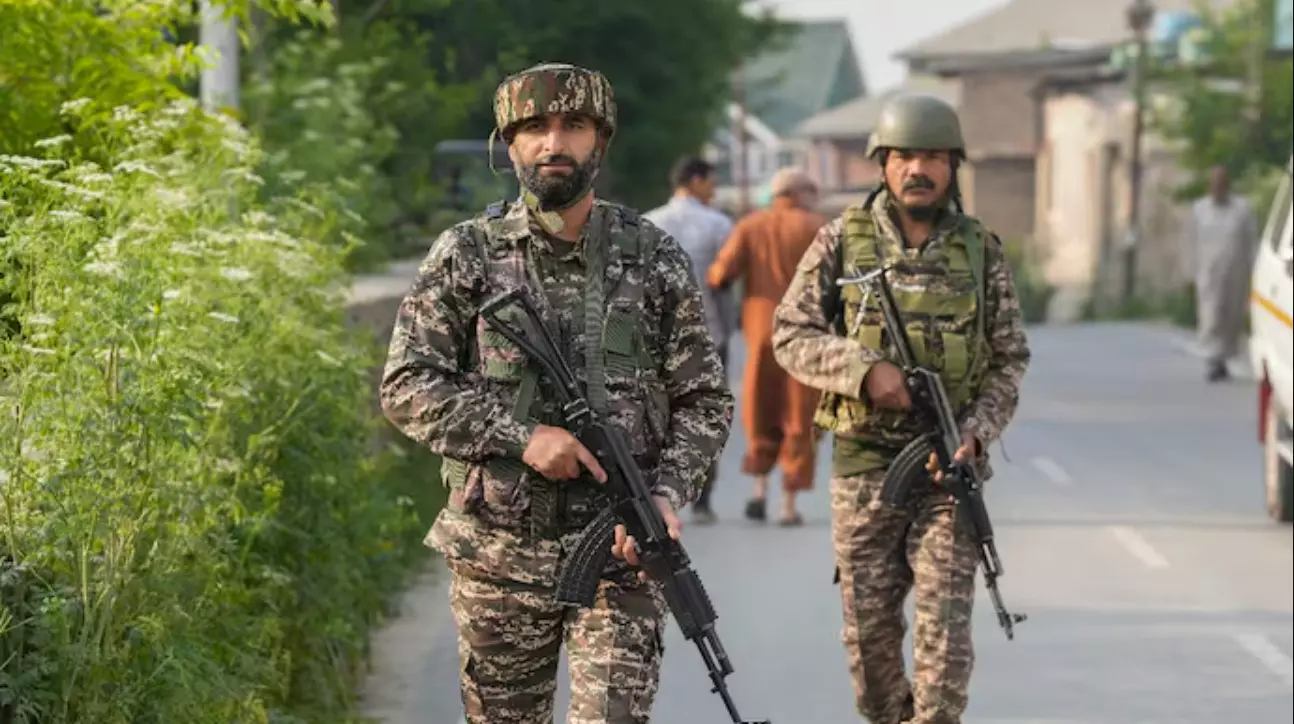Warriors of Peace
In post-Operation Sindoor Jammu & Kashmir, the Indian Army has redefined the contours of soldiering. It has merged surgical precision with empathetic outreach to safeguard, serve, and sow seeds of peace

The Army’s post-Operation Sindoor approach in J&K is a testament to its ability to evolve with J&K’s needs. By blending military precision with humanitarian compassion, it has not only neutralised threats but also laid the groundwork for sustainable peace and development. This dual role serves as a reminder that true security encompasses not just defense but also the empowerment and upliftment of communities. In J&K, the Army stands as a beacon of resilience, compassion, and hope, redefining what it means to serve a nation in conflict.
The Army’s multifaceted role in Jammu & Kashmir (J&K) post Operation Sindoor stands as a powerful example of its ability to blend strategic military precision with humanitarian outreach and nation-building. Far beyond its traditional role as a combat force, the Army has emerged as a cornerstone of stability, progress, and hope in a region long plagued by conflict. This dual approach—combining resolute security operations with compassionate civic engagement—demonstrates a forward-thinking doctrine that prioritises both national security and the welfare of J&K’s people.
Operation Sindoor was a meticulously executed military campaign targeting a dangerous terror network operating across the border (Pakistan). Leveraging advanced intelligence, cutting-edge surveillance, and specialised high-altitude warfare units, the operation neutralised critical threats with remarkable efficiency. It underscored the Army’s growing expertise in counter-insurgency and asymmetric warfare, sending a clear message about its operational readiness and adaptability in challenging terrains. The success of Operation Sindoor was not confined to its immediate tactical outcomes. Its broader impact reshaped the security landscape, enabling greater control over infiltration routes and fostering an environment conducive to peace and development. The operation’s ripple effects continue to influence both military strategy and civilian life in J&K. In the wake of Operation Sindoor, the Army adopted a proactive and multi-layered approach to counter-terrorism. Key advancements included the use of drones, thermal imaging, and real-time satellite data enhanced surveillance capabilities, securing previously vulnerable high-altitude areas and border infiltration routes. Granting greater autonomy to battalion-level officers enabled rapid, on-ground decision-making, improving response times and operational effectiveness. Strengthened ties with local communities led to increased trust and better intelligence-sharing, allowing the Army to preempt and neutralise threats more effectively. These measures not only bolstered security but also created a safer environment for civilians, encouraging economic activity, mobility, and a return to normalcy in districts once marred by volatility.
The Army’s role in J&K extends far beyond its security mandate, with significant contributions to infrastructure and socio-economic progress, particularly in remote and underserved areas. Post Operation Sindoor, these efforts gained momentum:
✼ The Army spearheaded the construction of critical infrastructure, including roads in isolated regions like Gurez, Tangdhar, and Machil, as well as footbridges and helipads to facilitate emergency evacuations and improve connectivity.
✼ Through its Army Goodwill Schools, the Army provides quality education to thousands of Kashmiri students.
✼ Post Operation Sindoor, additional learning centers, libraries, and digital classrooms were established in neglected villages, fostering educational access and opportunity.
✼ Vocational training programs in districts like Baramulla, Kupwara, and Poonch have empowered women and youth with skills for financial independence, from handicrafts to IT training.
✼ Coaching centers for competitive exams and civil services have opened pathways for Kashmiri youth to integrate into national mainstream opportunities, reflecting a long-term vision for empowerment.
A cornerstone of the Army’s civic engagement is Operation Sadbhavana, a humanitarian initiative that bridges gaps in public services and fosters goodwill. Following Operation Sindoor, these efforts were scaled up:
✼ Mobile medical camps, veterinary services, and health awareness drives brought critical care to remote villages, addressing gaps in civilian healthcare infrastructure.
✼ The Army distributed essentials like food, clothing, and educational supplies during harsh winters and crises, including pandemic-related challenges.
✼ By collaborating with local leaders, religious figures, and youth groups, the Army has promoted inter-community harmony and countered divisive narratives, building a foundation for lasting peace.
These initiatives have reshaped perceptions, positioning the Army as a trusted partner in progress rather than solely a security force. The Army’s sustained presence has had a profound psychological impact on J&K’s residents. With enhanced security, parents feel safer sending children to school, businesses are thriving, and tourism in areas like Gulmarg, Pahalgam, and Sonamarg has surged. The Army’s efforts to humanise its role—through cultural events, sports tournaments, and youth engagement programs—have transformed its image into that of a protector and enabler of prosperity. J&K’s vulnerability to natural disasters, from avalanches to floods, has seen the Indian Army consistently step up as a first responder.
The writer is a freelance journalist based in J&K. Views expressed are personal



